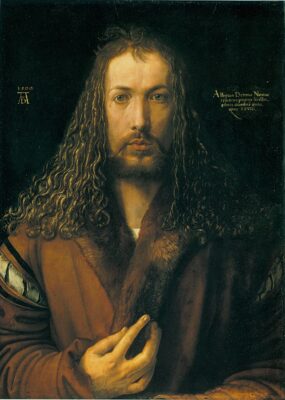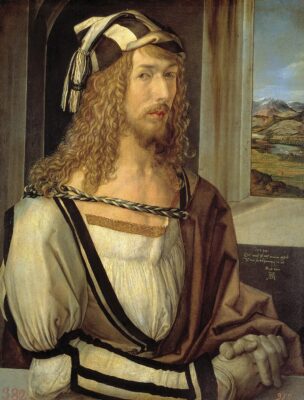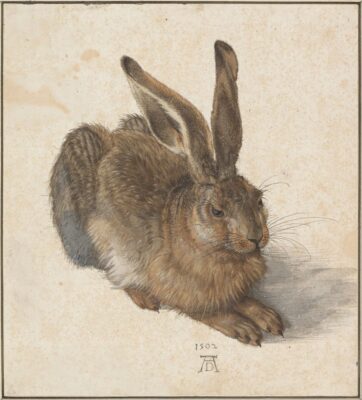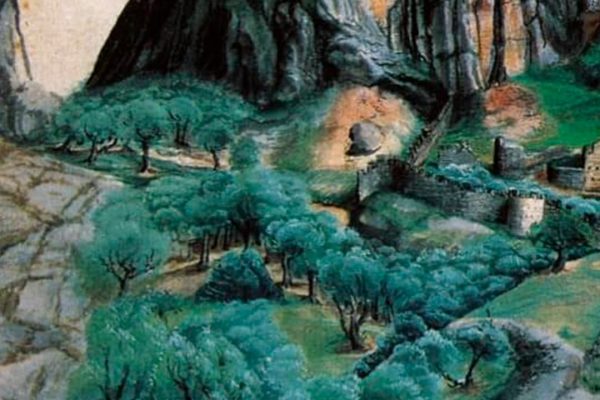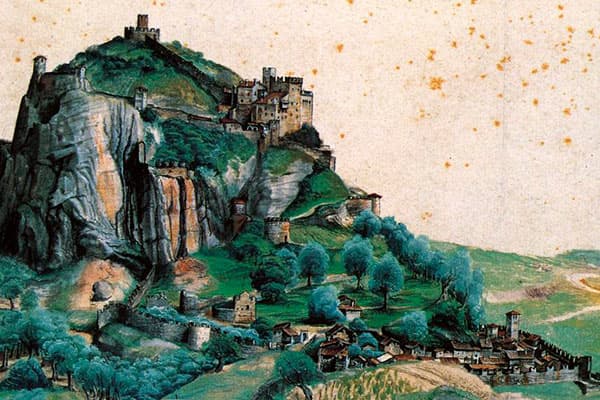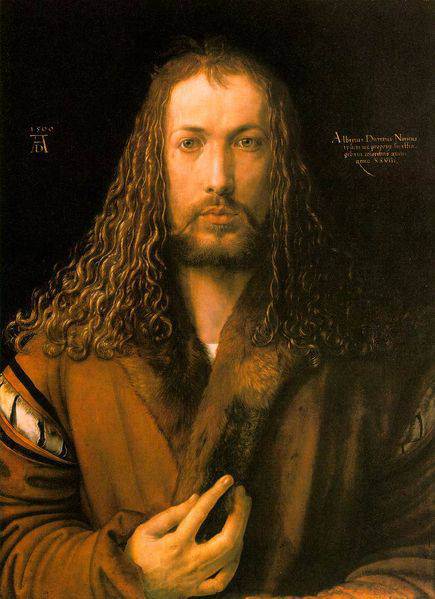Albrecht Dürer
Albrecht Dürer: “Self-portrait”, 1498. Oil on panel, 52 x 41 cm. Madrid, Prado Museum ·· Albrecht Dürer: “Self-portrait”, 1500. Oil on panel, 67,1 x 48,9 cm. Alte Pinakothek
The greatest genius of the German Renaissance, the Leonardo da Vinci of Northern Europe was Albrecht Dürer, who, like the genius born in Vinci, combined an endless curiosity with an enormous talent, which led him to create a rich corpus of works, ranging from self-portraits to pure landscapes, from complex religious scenes to detailed anatomy studies, or his famous drawings of animals and plants, drawn with the precision of a scientific study. For Fernando Chueca (“Albrecht Dürer”, 1993), “along with observation, Albrecht Dürer proposes an even more radically novel attitude: that of study. Now we find ourselves at the antipodes of any medieval consideration, whether decorative or symbolic“.
The son of a Hungarian goldsmith who emigrated to Germany, Albrecht Dürer was born in Nuremberg in 1471. His colossal talent manifested early, and at the age of 13 he drew a quite outstanding “Self-portrait”, preserved today in the Albertina Museum in Vienna. Throughout his life, Dürer maintained his interest for the self-portrait. Nine years later he painted, this time using oil, a Self-Portrait preserved today in the Louvre Museum, and a short time later -after a trip to Italy that would be a transformative point in his artistic career- he executed two of the most famous self-portraits in history of art: one in the collections of the Prado Museum, in which he combines an arrogant pose with a landscape seen through a window; and another, preserved today in the Alte Pinakothek and painted at the age of 28, that is possibly his most personal and complex work.
It was on his first trip to Italy, in 1494, that Dürer had contact with the work of the masters of the time, such as Giovanni Bellini and Andrea Mantegna. In addition, it was there where he managed to perfect the technique of engraving, a medium with which he would later create masterpieces such as “Melancholy” or “Adam and Eve”. On his return, he created his now famous watercolors of animals and plants, created with exceptional realism, such as his “Young Hare” (1502) or “Great Piece of Turf” (1503)
Albrecht Dürer: “Hare”, 1502. Watercolor, 25 x 22.5 cm. Albertina, Vienna ·· Albrecht Dürer: “View of Arco“, 1495. Watercolor on paper, 22.1- 22.1 cm. Paris, Louvre
Dürer traveled to Italy again in 1505, staying two years before returning to Germany. Back in Nuremberg, Dürer reached his artistic maturity, creating works of exceptional complexity such as “The Martyrdom of the Ten Thousand” or the “Landauer Altar“, both now in the collections of the Kunsthistorisches Museum in Vienna, as well as some of his most famous etchings, such as his now very famous “Rhinoceros”, an animal that Dürer never saw in his own lifetime, and whose representation is based on descriptions and sketches by other artists and travelers.
After a trip to the Netherlands in 1520-21, Dürer fell ill (the nature of his illness is still unclear), which forced him to reduce his artistic activity. He therefore put his efforts into the publication of two treatises on painting: “Four Books on Measurement” (1525) and “Four Books on Human Proportion” (1528), the latter a continuation of a series of studies undertaken by the artist during the previous decade. For Panofsky, “Dürer was the first artist who, brought up in late-medieval workshops of the North, fell under the spell of art theory as it had evolved in Italy. It is in his development as a theorist of art that we can study in vitro, as it were, the transition from a convenient code of instructions to a systematic and formulated body of knowledge. And it is in his contributions to this body of knowledge, written and printed, that we can witness the birth of German scientific prose“. (Erwin Panofsky, “The Life and Arts of Albrecht Dürer”, 1955).
Albrecht Dürer passed away in his hometown in 1528, at the age of 56.
G. Fernández · theartwolf.com
Masterworks by Albrecht Dürer
Follow us on:

